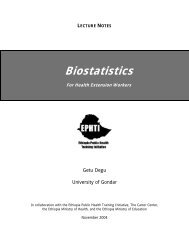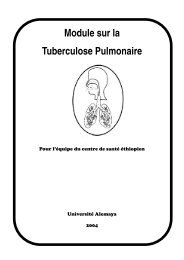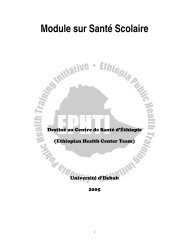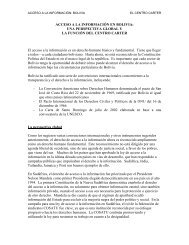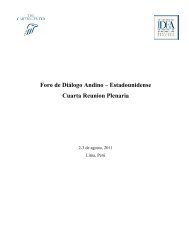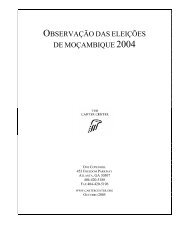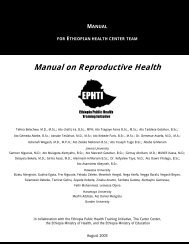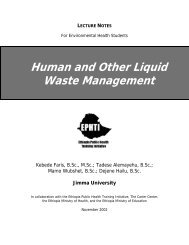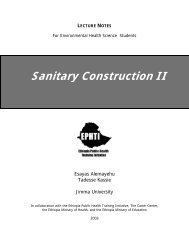Urinalysis - The Carter Center
Urinalysis - The Carter Center
Urinalysis - The Carter Center
Create successful ePaper yourself
Turn your PDF publications into a flip-book with our unique Google optimized e-Paper software.
CHAPTER TWO<br />
9<br />
Collection And Preservation Of Urine<br />
Specimen<br />
Objectives<br />
It is expected that the information presented in this chapter will enable<br />
the student to :<br />
• Identfy factors affecting the quality of a specimen.<br />
• List the basic rules of urine collection.<br />
• Describe types of urine specimens.<br />
• Identify the commonly used preservatives and know the advantages<br />
and disadvantages of their use.<br />
2.1 Collection of Urine Specimen<br />
In order to make <strong>Urinalysis</strong> reliable the urine must be properly collected.<br />
Improper collection may invalidate the results of the laboratory<br />
procedures, no matter how carefully and skillfully the tests are<br />
performed.<br />
Urine Containers<br />
<strong>The</strong>re are many types of containers used for collecting urine. Before<br />
specimens are collected, the containers must be cleaned and<br />
thoroughly dried. Disposable containers of plastic or coated paper are<br />
available in many sizes and are provided with lids to reduce bacterial<br />
and other types of contamination. Special polyethlene bags are<br />
available for collectionn of urine from infants and children who are not<br />
toilet trained.URIN-TEK disposable collection system is available for<br />
use in collecting, storing, transporting, and testing specimens of urine.<br />
<strong>The</strong> system consists of a flat-bottomed paper collection cup, a 15 ml




